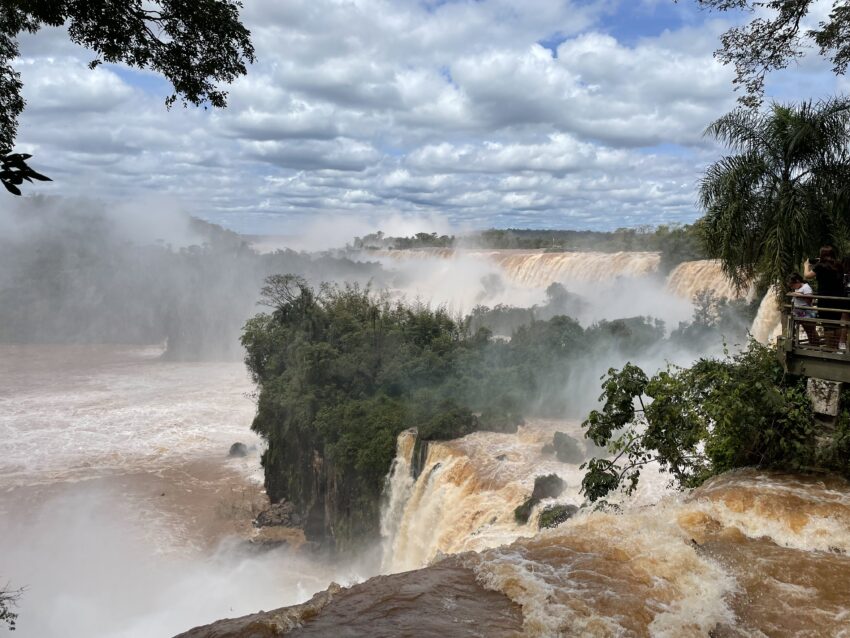Picture the scene. You’ve travelled half way round the world to see one of the planet’s greatest natural wonders, only to be told that it’s closed. Imagine the crushing disappointment…
So it was for us in Argentina after arriving from Buenos Aires at the Selvaje Lodge Hotel in the jungle half an hour’s drive from the mighty Iguazú Falls, one of the greatest and largest of the world’s waterfall systems and a UNESCO World Heritage Site. On the border where Brazil, Paraguay and Argentina meet, it was closed on the Argentine side, the hotel staff told us in a supreme example of irony, because there’d been too much rain. The falls were just too wild and had inundated the footpaths that visitors need to follow. The one bit of good news was that we could take a taxi over to Brazil and see them from that side of the border.
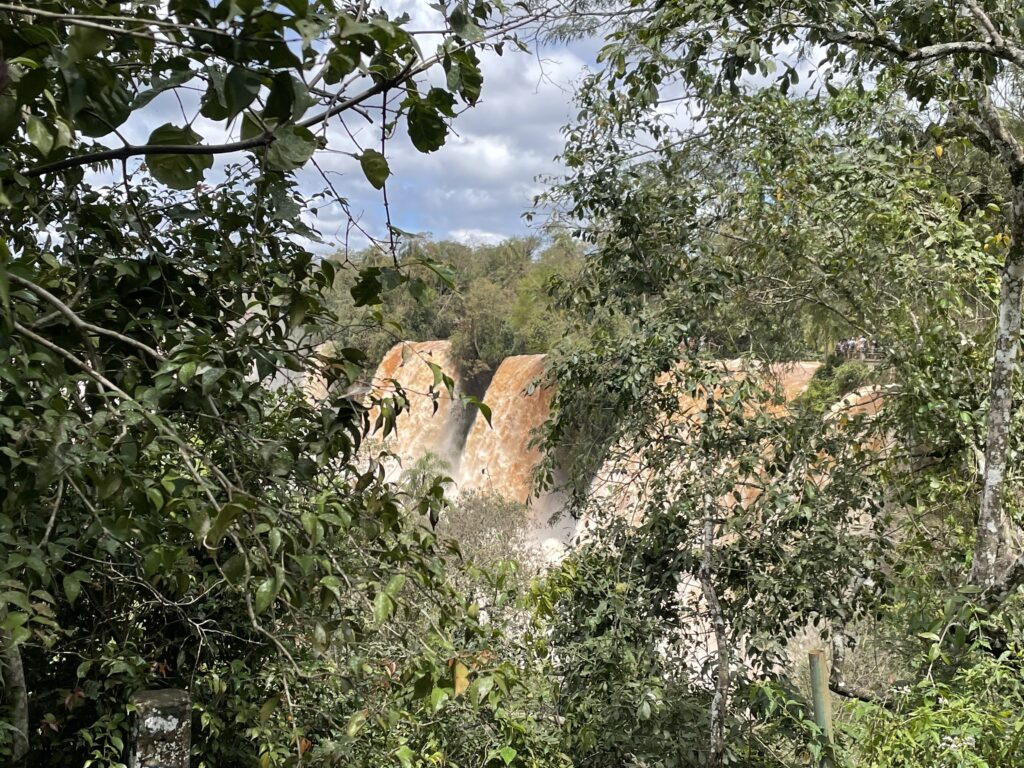
I went to bed with a cold, high on a pleasant local beer and feeling a bit gutted that we wouldn’t be getting up close to one of the great natural wonders of the world. However, the next morning the picture had changed – the Parque Nacional Iguazú had reopened on the Argentinean side. But by the end of our day there I could see why the authorities had erred on the side of caution and shut off access for a while…
We got a taxi from our hotel, down the straight highway 12 past various tourist attractions and hotels on the edge of Puerto Iguazu before entering the unrelenting jungle. Road signs warned of wild animals, notably jaguar, that stalk the national park but are rarely seen in the open.
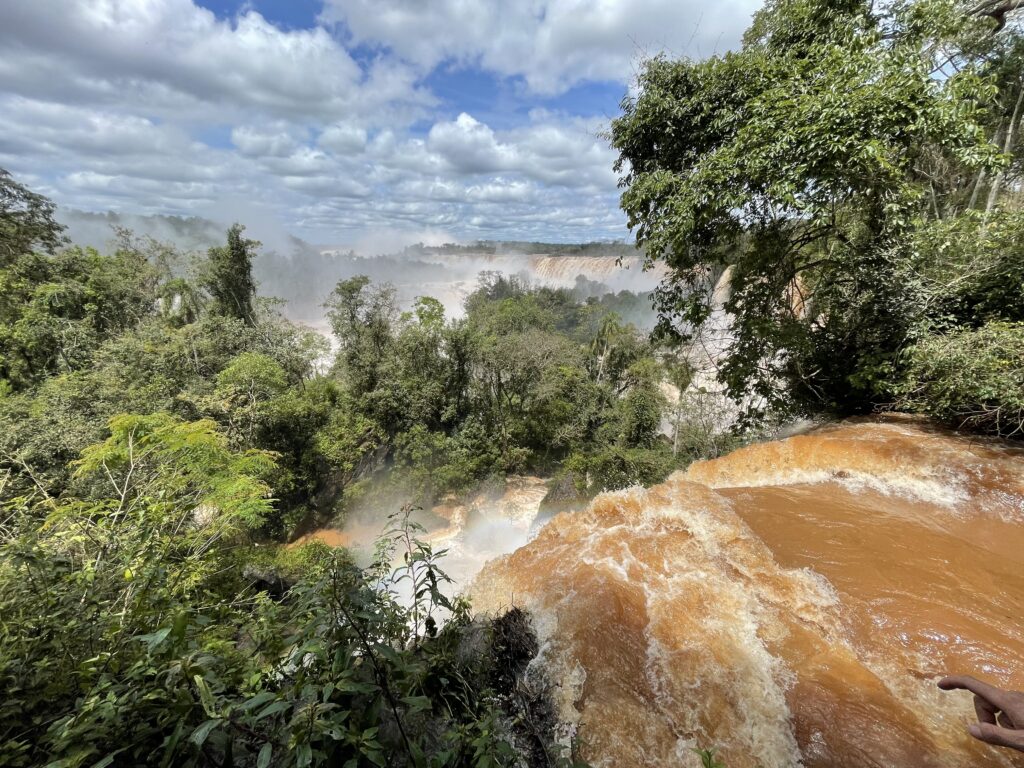
I was half expecting mile-long queues to get in but we made it through the entrance easily enough and ventured off in search of the two paths that were open. The third, which leads to the dramatic gorge known as the Devil’s Throat, remained closed because of the conditions. We bypassed a narrow guage railway that runs to various stations around the park, preferring the short walk instead.
The sound gets you first, a deep, threatening rumbling that’s ever present as you take the footpath through the marshes and jungle. Beyond, above the tree canopy, clouds of spray climbed towards the cloudy sky. A helicopter or two buzzed overhead, giving a privileged few an aerial view of the falls.

That’s when we met the crowds, shuffling painfully slowly along the narrow paths. It was a bit dispiriting but we persevered, taking the 1.75km Superior route first along the top of the falls. Inches below the path torrents of muddy water flowed excitedly beneath us, clearing a way between the tangled vegetation. This was a clear sign of how much rain had fallen, how far the River Iguazu had wandered beyond its usual path. Information boards revealed that the river water had grown gradually muddier over the years as a result of deforestation upstream, leaving the land more exposed to erosion.
Moments later, between the trees and the mist, lay our first proper view of the falls, a truly special moment. There is something elemental, powerful and moving about waterfalls and their awesome strength is hypnotising. Not that it’s possible to see them all like you can at Niagara – there are 275 that make up the system. We stood above the Dos Hermanas falls amid the jungle, the waters churning, barely able to hear each other speak. Just beyond lay the Chico, also detached from the main falls complex and attracting just as many folk keen to get the perfect picture.
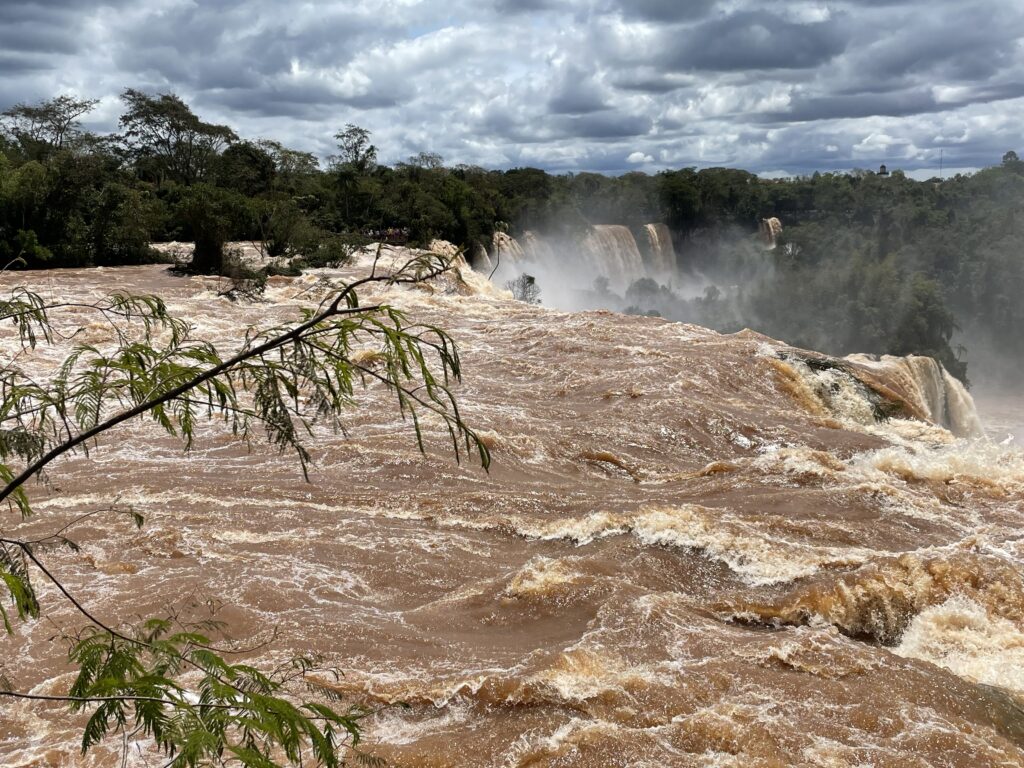
The path continued suspended just above vegetation and surging river before it emerged above a large complex of falls opposite the Isla San Martin, where the Bossetti tumbled with rusty red water and the spray surged. Clouds cleared to reveal patches of blue sky and the colours came alive. It was simply, unimaginably beautiful.
As we walked on it became clear that the falls are not one single drop, but two-stepped and formed by giant slabs of basalt. At the climax of the Superior route we emerged onto the edge of the river proper, and then walked on the mercifully sturdy path over the flowing water to a view point where the Bernabe Mendex and Mbigua falls tumble violently into the chasm below. The word breathtaking is overused but if it was invented for anything, this was it. Opposite us we could spot tourists on the Brazilian side getting the widescreen view, but the view towards the chasm of the Devil’s Throat was lost in a mist of the falls’ making.

The twisting Inferior or Lower route gives a completely different perspective, and is altogether more thrilling because it takes you to the foot of several falls. We got a good soaking at the Dos Hermanas and appreciated a different perspective of the Isla San Martin, which can be visited by boat on quieter days. Several stretches of the path had, however, been closed off because of the sheer amount of water. On the river, boats carrying tourists headed into the spray, while down in the jungle, capuchin monkeys scampered about in the trees and on the forest floor. Coatis lurked in the vegetation seeking food. Eagles circled in the thermals above us.
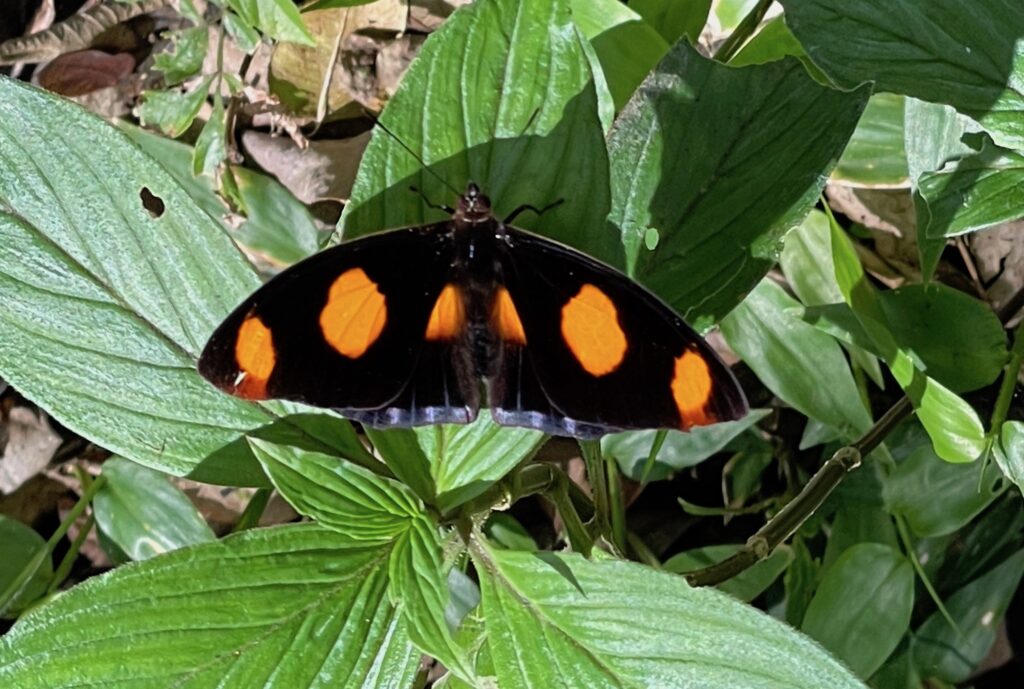
We walked away from the falls exhilarated and footsore. We’d talked about visiting the Brazilian side the following day but I couldn’t help thinking it would be an anticlimax after being so up close to them. So we opted instead to spend a lazy day of our holiday by the pool back at our small, quiet hotel, tucked away amid the lushness of the jungle outside of town, appreciating their excellent food and wine. No jaguars visited but we were not disappointed by the butterflies, some of which were the size of dinner plates and decorated with amazingly vivid colours. A perfect end to a visit that threatened to be a disaster but delivered one of the most memorable days of my travelling life…

